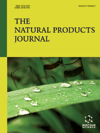
Full text loading...
We use cookies to track usage and preferences.I Understand

In this study, we utilized high-performance liquid chromatography coupled with quadrupole-time of flight mass spectrometry (HPLC-Q-TOF/MS/MS), combined with electrospray ionization in the positive mode (ESI+), to establish a comprehensive framework for chromatographic separation and mass spectrometric detection.
The primary focus was on performing collision-induced dissociation (CID) experiments on levantilide D, a newly identified macrolide, and its well-established analog, levantilide C, in order to elucidate their mass spectral fragmentation patterns.
The results revealed that the cleavage patterns of levantilides were successfully characterized when ionized in the positive mode. These fragmentation profiles provide valuable insights for the rapid and accurate structural identification and quantitative analysis of levantilides when they often occur in trace amounts.
Furthermore, this methodology offers crucial technical references for environmental pollutant monitoring and pharmacokinetic investigations for levantilide-related compounds.

Article metrics loading...

Full text loading...
References


Data & Media loading...
Supplements